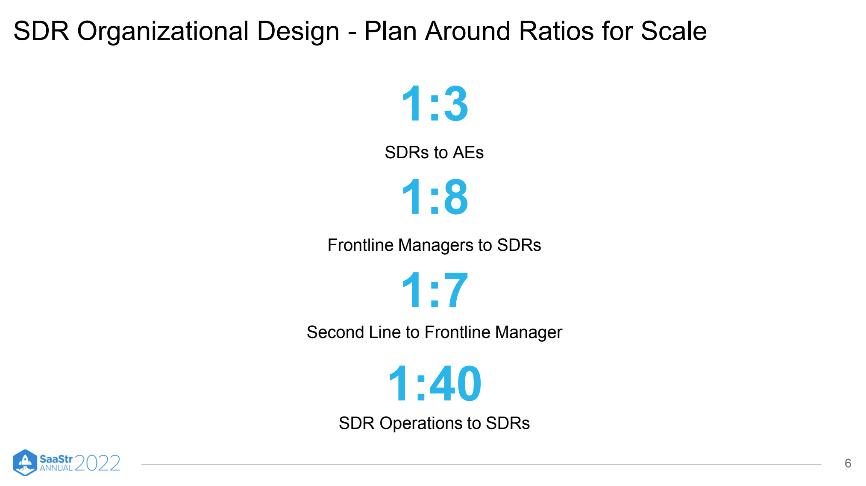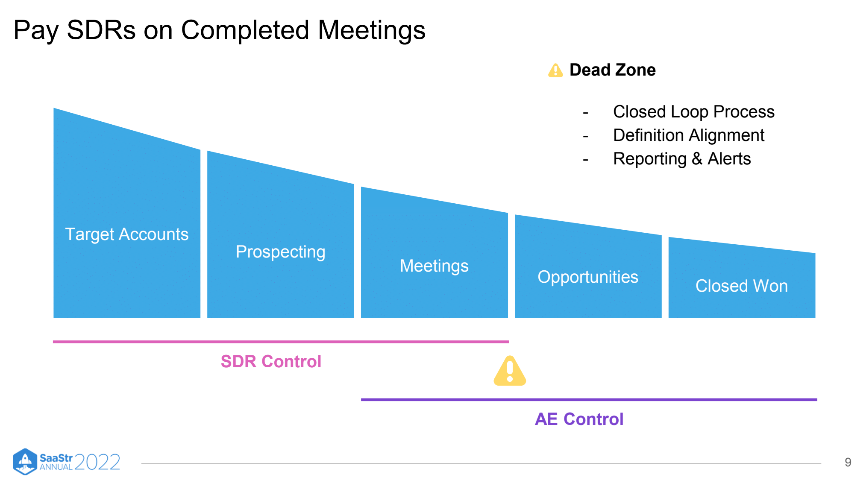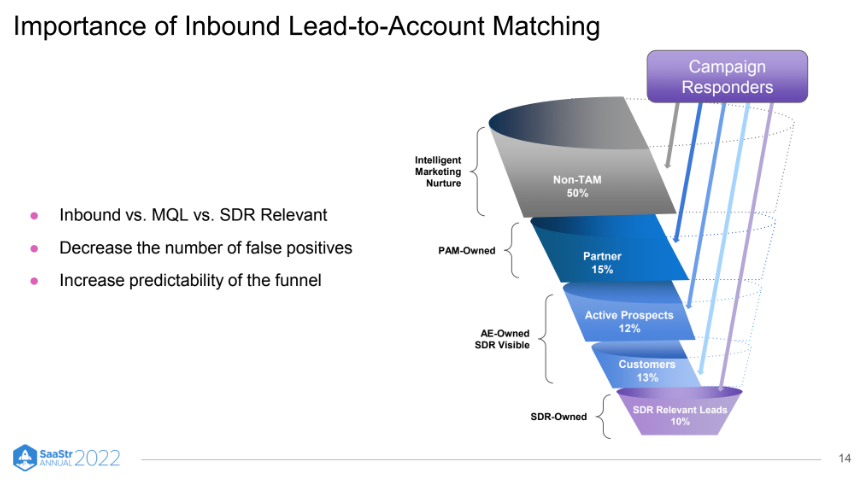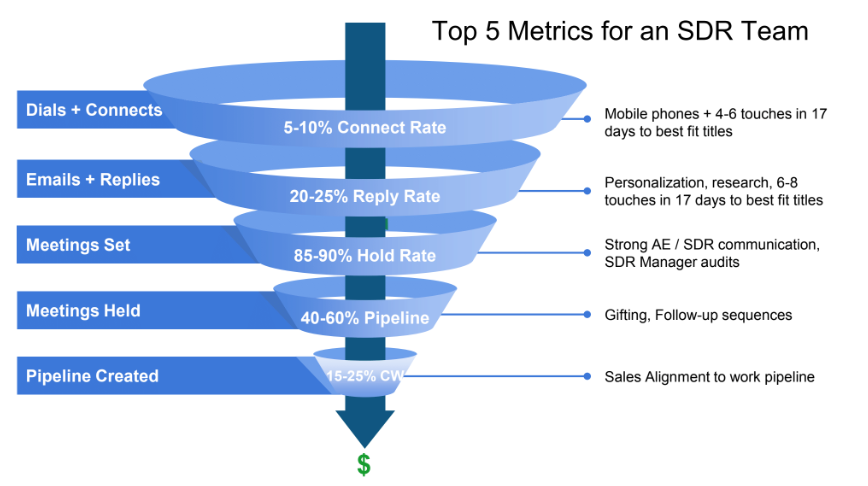“The hardest part of closing any deal is finding it,” says Lars Nilsson, VP of Global Sales Development at Snowflake. Over his 35+ year career, Nilsson has managed 100+ Sales Development Representatives (SDR) across four continents, six countries, and ten cities.
The role of an SDR requires one to be in the trenches—prospecting, qualifying, and cold calling, so your sales team can focus on selling, negotiating, and closing.
“A single SDR can fill the pipeline of up to three sales representatives and help you accelerate revenue.”
Every minute spent prospecting is a minute not spent closing revenue. Here are Nilsson’s insights on the value of investing in an SDR team, a function that has revolutionized the productivity of sales teams.
Jumpstart pipeline generation with your first five revenue hires
Early-stage founders should first focus on an SDR that can tell their brand story—someone who can develop and produce content and messaging. Content is king for generating demand and educating and inspiring prospects to take a meeting to learn more. Customer testimonials, case studies, founder-written vision boards, and recorded webinars are all ways to tell your story and share how you can solve the problems your prospects are facing.
Once this content goes out into the world, people will read, bump, and share this content, potentially increasing your opportunities for inbound leads. This is the fodder and fuel that SDRs love. You can then identify qualified marketing leads—someone who has downloaded and engaged with your content a few times.
Your next hires should be two SDRs who can book meetings for the founder and the early-stage team. As an early-stage founder, you are the best person to sell your product and your company’s best sales rep. At this stage, you must learn what it takes to go down a sales path and lose and, similarly, to do so and win.
As your SDRs generate meetings and high points start to build, hire two sales reps to round out your team and get a jumpstart on lead generation.

Hire for fire in the belly
Learn to screen and ask the right questions to identify people with passion. You can teach anyone how to qualify leads or present, but you can’t teach how to get up in the morning with a great attitude and get after it. You should hire for passion and attitude, and you’re likely to find them in the unlikeliest places.
Many SDRs are people looking to start or change their careers. They are straight out of university, former teachers, people coming back from the military, or those wanting to get back into the workforce. They may have never been to college. One common feature of an SDR, though, is that they have fire in the belly.

Understand your Target Addressable Market (TAM)
Your marketing team can’t be expected to create demand in every geography.
Persona identification becomes increasingly important as you succeed in your early sales campaigns. Focus on 1000 to 5000 accounts you want to target and truly believe you can solve for. Understand the personas and titles of the people that care about your solution.
You’ll soon realize that the prospects who care in the early stage of your sales cycle differ greatly from those that come in the middle of the sales cycle and are altogether different from those at the end of the sales cycle. But as you go down the path, look at your CRM, perform win and loss reviews, and understand the personas and actual titles that stick. The world has so many tools available to help you sharply identify your TAM. An SDR needs only to set up personas on a tool to get going. You can’t afford to wait for someone to discover your marketing assets and come to you accidentally. You need to go to them.

Importance of inbound: lead-to-account matching
If you’re pushing a lot of messaging out and hosting events, you can expect a surge in inbound leads. But that’s not enough. You must qualify those leads and ensure they fit your TAM. And, if you use SDRs to manage inbound leads, you risk burning them out.
“With lead-to-account matching, you can create more time for your SDRs to reach the right people.”
A vital step in prioritizing your TAM is implementing lead-to-account matching technology. Once you have your TAM seeded into the database of the lead-to-account matching tool you’re using, any inbound lead that comes which is outside of that TAM gets de-prioritized.
Importance of outbound: account-based marketing (ABM) to account-based sales development (ABSD)
We live in a modern, account-based world. Accounts have more ubiquitous access to near-perfect information on almost any vendor they could look at.
Marketers are building account-based marketing motions and delivering to target personas that are highly personalized to specific roles, geographies, and verticals. If you believe you can deliver value to your identified persona, communicate with your audience with them in mind. Your open rates and reply rates will increase.
At the beginning of each month, decide on a series of accounts that you want to put into an account-based marketing motion. Then use technology to understand who among that set of accounts is searching, the words they’re searching for, and hone in on the right time to send out account-based marketing content.
After three weeks of sending out communication, your SDRs can initiate automated outreach sequences and touch patterns, hoping that prospects will open their email, reply to it, and engage.

Sales engagement tech is a must-have
Any early-stage founder just getting to revenue must invest in a sales engagement tool. That’s all an SDR needs to get going.
“Sales engagement technology is necessary to build a sales development organization.”
A sales engagement platform lets you automate the mundane, puts the power in the hands of your SDR team, and makes them more efficient. It is a single-point interface to plan, execute, track, measure, and optimize ongoing interactions between your sales team and customers. It’s the platform that monitors activity across various touchpoints and channels and is a key driver of growth.
Final words
Founders and revenue leaders must understand and respect the role of an SDR. Hire early-in-career professionals and develop them in your company so that they stay with it.
Create an SDR opportunity enablement program, customize it, and develop a playbook for the SDR.
Many companies have grown to prominence on the back of an SDR team. It deserves respect and frontline leadership. Give sales leaders a seat at a table as your SDR team grows. The signals of an SDR team can affect a company’s marketing, sales, and eventual revenue success.

